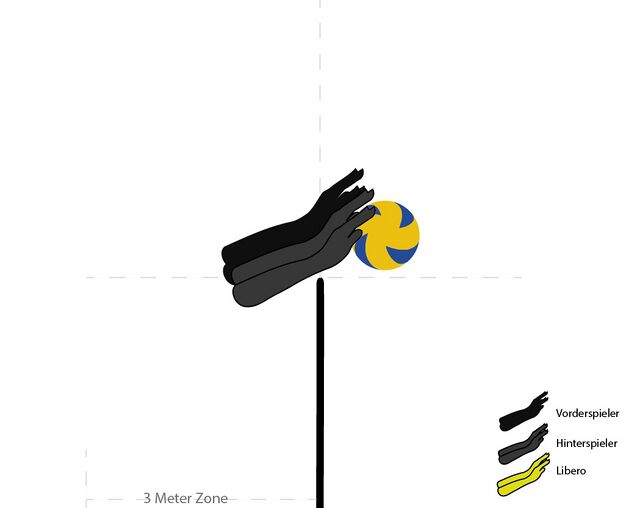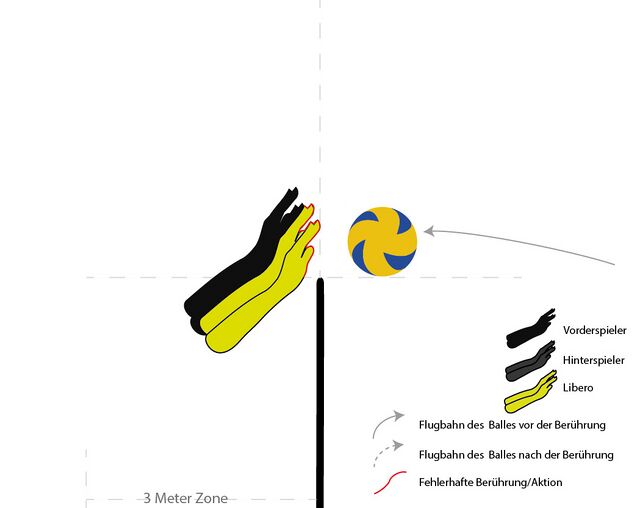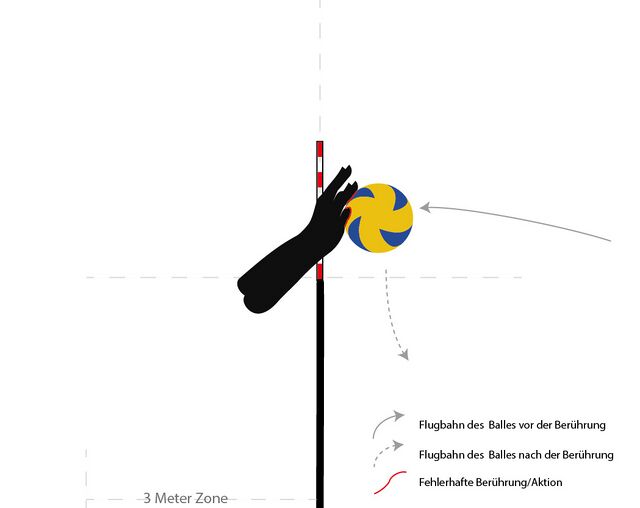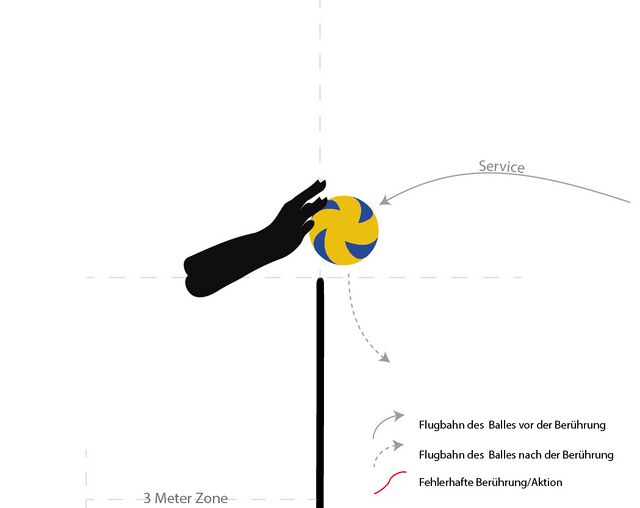6.5.2 Blocking fault
| [unchecked revision] | [unchecked revision] |
imported>Gesc No edit summary |
imported>Gesc No edit summary |
||
| Line 1: | Line 1: | ||
<loop_area type="notice">The following examples are intended to illustrate blocking faults. Typical game scenes are used as examples.</loop_area> | |||
'''Situation 1:<br />''' | '''Situation 1:<br />''' | ||
A ball that is received or defended badly goes directly to the opponent. A player plays the ball back directly. A setter, who is a back-row player, tried to set the ball but is now hit by the ball coming from the opponent. | A ball that is received or defended badly goes directly to the opponent. A player plays the ball back directly. A setter, who is a back-row player, tried to set the ball but is now hit by the ball coming from the opponent. | ||
Revision as of 10:18, 19 April 2020
The following examples are intended to illustrate blocking faults. Typical game scenes are used as examples.
Situation 1:
A ball that is received or defended badly goes directly to the opponent. A player plays the ball back directly. A setter, who is a back-row player, tried to set the ball but is now hit by the ball coming from the opponent.
The mistake only happens when the back-row player (or any other player who is part of the multiple block) touches the ball.
Situation 2:
A libero makes a block attempt. The block attempt begins at the moment when the libero reaches higher than the top of the net in an action near the net and the ball comes from the opponent.
Situation 3:
A ball is played far outside of the antenna and still attacked. The blocking player jumps and blocks the diagonally attacked ball outside of the antenna in the opponent’s space.
Situation 4:
A player blocks a flat, short service.
Texts and pictures are published under:
![]()
Videos are published under:
![]()



